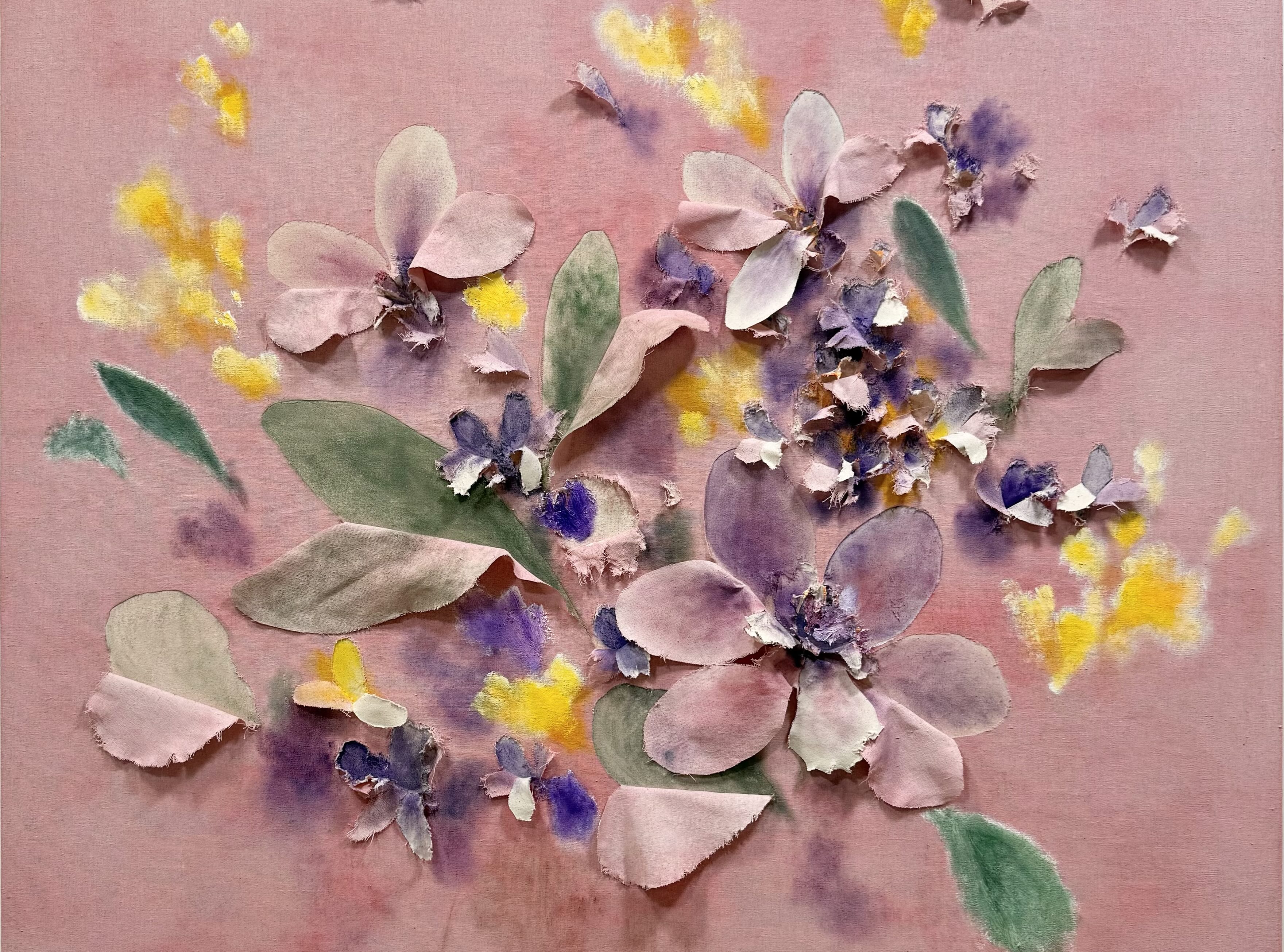
Atsuki Fujimoto
La luz del sol que se filtra a través de los árboles
Exhibition
-> Sep 4 2025 – Oct 30 2025
Atsuki works not only as an artist but also as a translator of the word komorebi, a traditional Japanese concept that describes the play of light and shadows created by the branches of trees, the movement of the sun, and the passing of the wind. From this principle arises the name of this exhibition. In the reality created by Atsuki, petals cut and woven onto the canvas hang suspended by their stems, projecting their shadow over the void, allowing the wind to pass through them and shape the floral compositions, so that the works may be inhabited by the fragile elements of komorebi. In this way, Atsuki shows us flowering as a silent process of light, where the elements are born, grow, sway, and come to a halt, even when unseen. By tearing, layering, and reassembling the surface of the canvas, Atsuki brings komorebi into the pictorial field, where the fabric acquires unusual volumes and reliefs that sketch both exterior landscapes of the countryside and interior ones, where vases rest on a table or trees and flowers appear before the observer, who inhabits them with the tactile gaze: petals, leaves, insects, the light, the wind, all fused into a refuge where the fragility of each element that shapes the chambers of time reigns. Thus, Atsuki Fujimoto transforms the exhibition space of La luz del sol que se filtra a través de los árboles into a garden of stillness and fullness, in which the balance between presence and absence manifests as an attribute of beauty. —Manuel Tuda